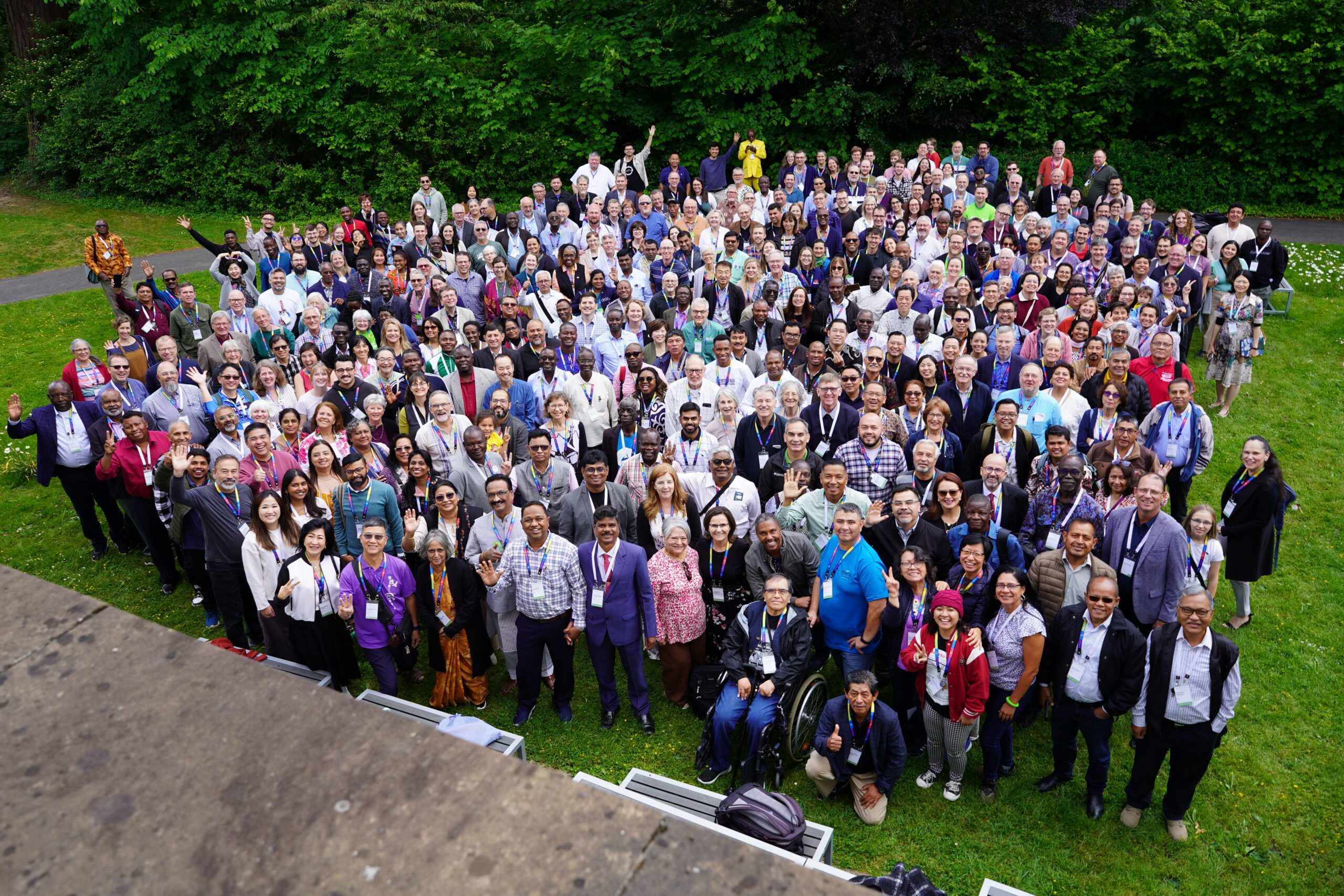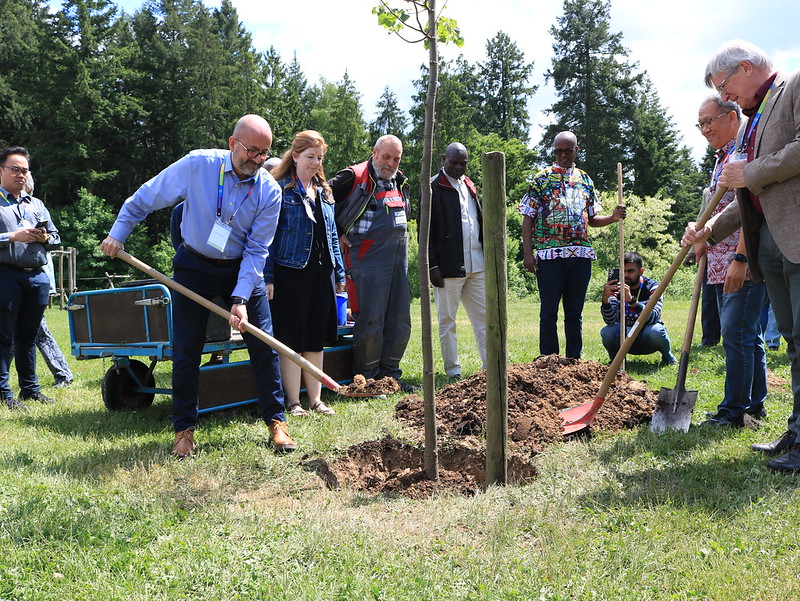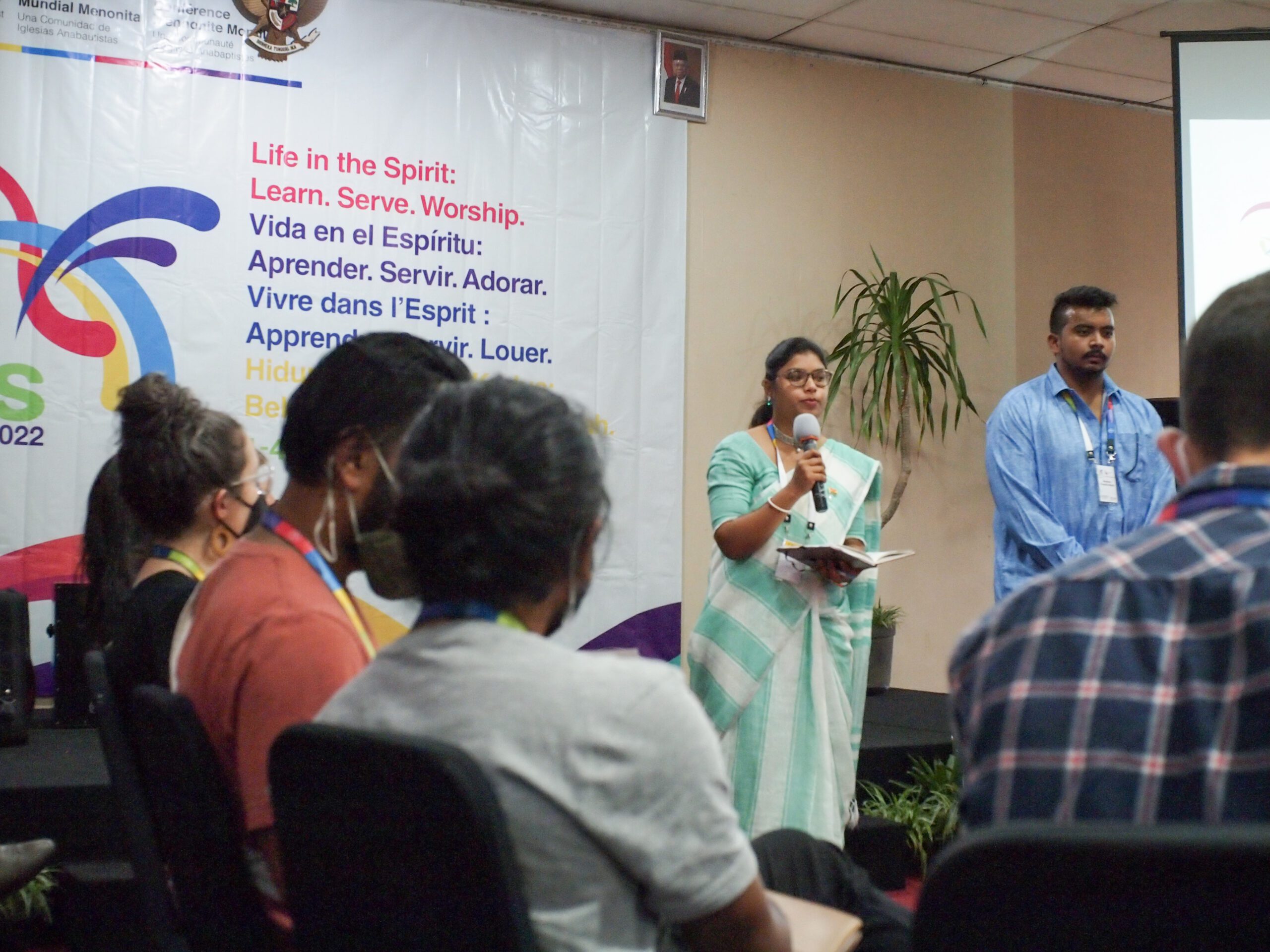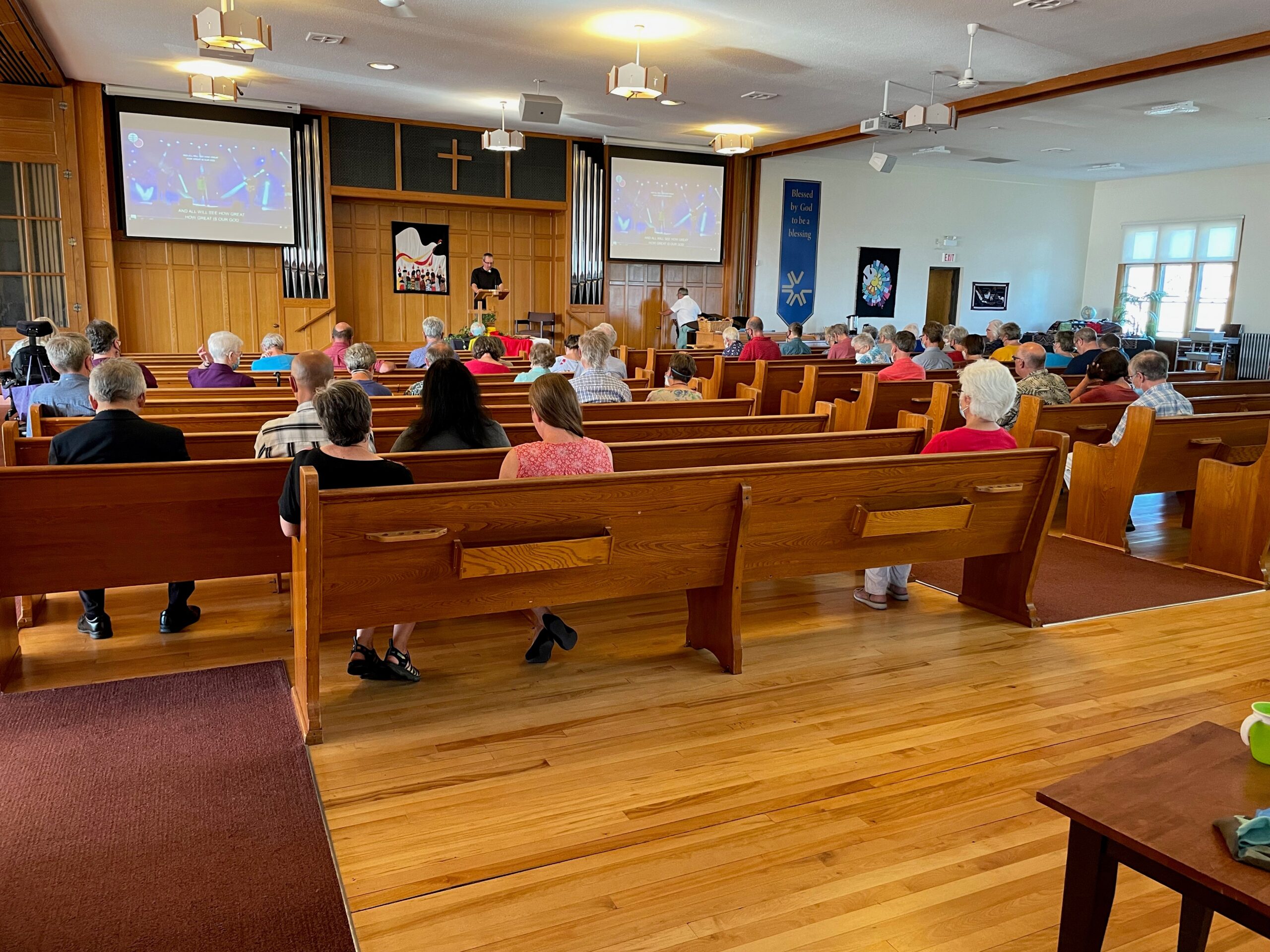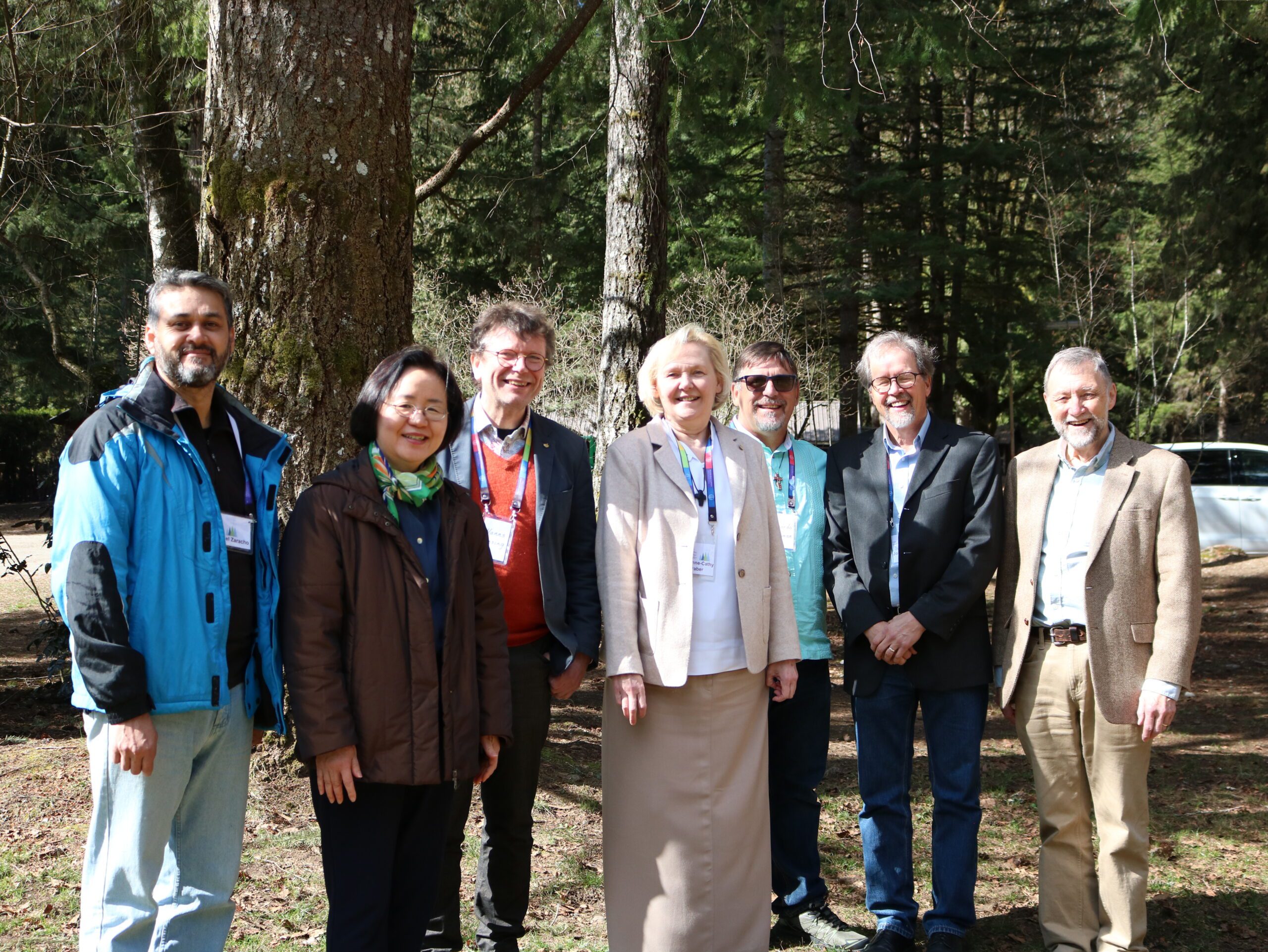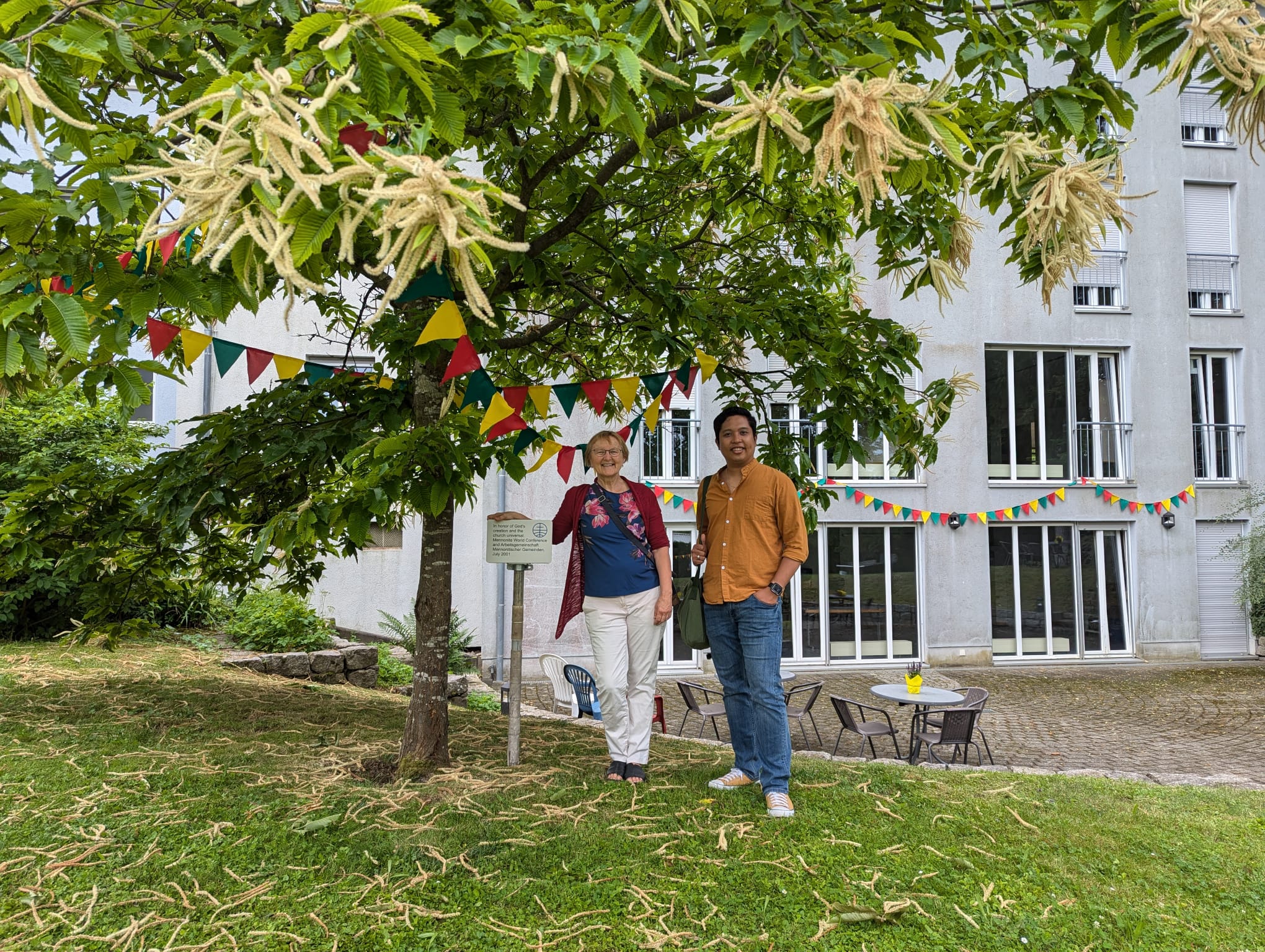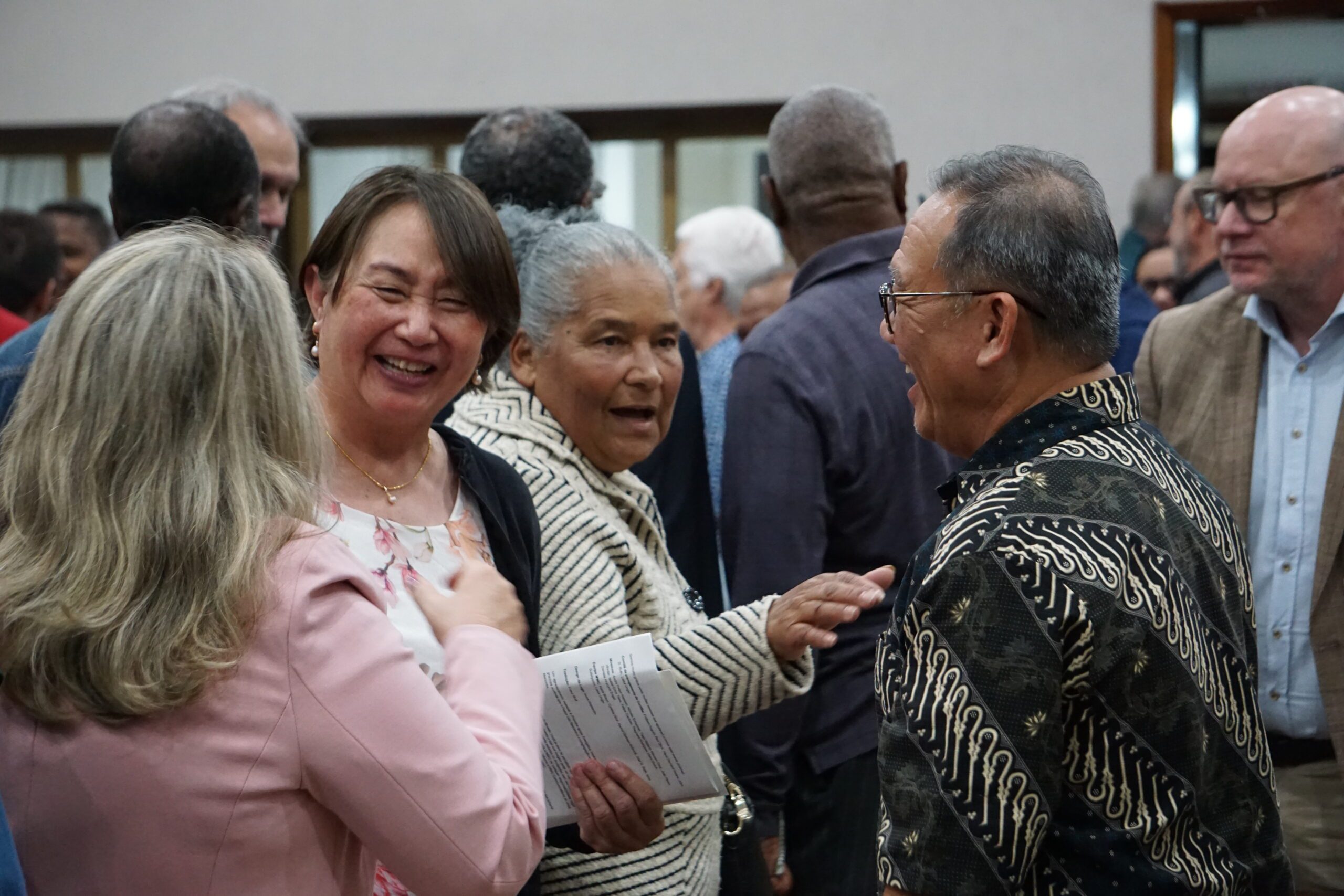-
From celebration to commemoration
Mennonite World Conference (MWC) concludes its triennial General Council (GC) meeting 26-28 May 2025 in Schwäbisch-Gmünd, Germany, with a clear framework for the future.
-
The Courage to Love: Anabaptism@500 event video
On 29 May 2025, Mennonite World Conference (MWC) welcomed guests from around the world to The Courage to Love: Anabaptism@500. The day-long celebration commemorated the birth of the Anabaptist movement in Zurich, Switzerland. Following workshops, concerts, a panel discussion and self-guided historical walking tours, participants gathered for a worship service with ecumenical participation at the…
-
A reminder of our presence in the world
“We are stewards of creation; this tree reminds us that every step we take as Commissions, as Officers, and Networks has repercussions for creation,” says Henk Stenvers, MWC president. It also symbolizes our presence in the world, he said. The Executive Committee, Commissions, staff and Creation Care Task Force planted a linden tree (tilia cordata)…
-
Bigger responsibilities in the global church
At the meetings in May 2025, General Council members will vote on a proposal for every Mennonite World Conference full member to have one Young AnaBaptist (YAB) delegate in the General Council starting 2028.
-
Powering the spinning wheel
Join in prayer for the global family “Prayer has been our spinning wheel. Thanks to the global church for the resilience in your prayers. It is encouraging to know that someone somewhere in the globe is reporting your issues to God,” says Okoth Simon Onyango, Mennonite Church Uganda, bishop. The members of Mennonite World Conference…
-
A celebration of ecumenism, joy, confession and hope
We invite everyone to worship with us! The worship service marking the culmination of Mennonite World Conference’s 500th anniversary event in Zurich, Switzerland, will be livestreamed. The event takes place Thursday, 29 May 2025, at 15:00 UTC. (Please note an earlier version gave the incorrect time. 15:00 UTC is when the service begins; tune in…
-
Seeking common witness together
MWC-WCRC dialogue creates statement and study guide “The search for peace starts within the body of Christ,” says Tom Yoder Neufeld, chair of MWC’s Faith & Life Commission. As Mennonite World Conference celebrates 100 years of living out unity within the Anabaptist family, our leaders are also working on our mission to relate with other…
-
Biblical and Theological Reflections on the MWC Tagline
Presented by Thomas R. Yoder Neufeld to the MWC Executive Committee at their meeting in Curitiba, Brazil, in April 2024. I. Following Jesus – “Who do you say that I am?” Introduction A year ago, at Camp Squeah in British Columbia, Canada, the EC developed a new tagline for the MWC: “Following Jesus, living out…
-
General Council leaves a mark
At a prayer meeting, a Mennonite World Conference staff member prayed that the presence of Anabaptists gathered in Germany for General Council meetings would leave a mark. Although the prayer was to leave behind the fragrance of Christ, there will also be a living memento of Mennonite World Conference’s visit. The Executive Committee, Commissions, Creation…
-
Celebrate 100 years of unity
A centenary only comes around every 100 years! Mennonite World Conference is celebrating their 100th anniversary with a worship service and reception in Schwäbish Gmünd, Germany, 25 May 2025. “We hope Anabaptists will be able to make the journey to Schönblick from hundreds of kilometres in each direction around Europe to celebrate this momentous anniversary…
-
MWC Structure
Mennonite World Conference is a membership-based organization; where strategic decisions are made by representatives of member churches.
